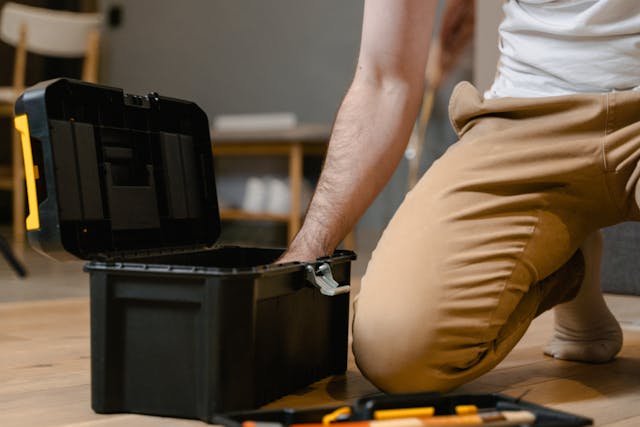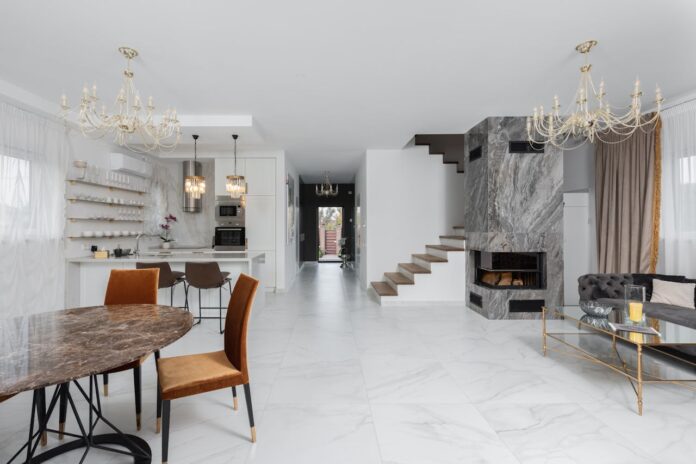Tired of chilly floors and unpredictable heating? Water underfloor heating might be the game-changer you’ve been looking for! This innovative system not only keeps your home warm and cosy, but can also help you save on energy bills by evenly distributing heat throughout your space. If you’ve been curious about how wet underfloor heating works or whether it’s the right fit for your home, look no further. In this article, we’ll answer your burning questions, explore the benefits of this heating solution, and guide you through selecting the ideal water underfloor heating kit for your needs. Let’s transform your home into a cosy haven together!
What is Water Underfloor Heating?
Water underfloor heating, also called wet underfloor heating, is a system that uses hot water to heat your home from the ground up. This is different from electric underfloor heating, which uses wires to generate heat. Wet systems use pipes laid beneath the floor. Hot water flows through these pipes, warming the floor and the room above.
Most water underfloor heating kits include pipes, a manifold, and a pump. The manifold distributes water to the pipes, and the pump helps circulate it. These systems can connect to boilers, heat pumps, or other heat sources.
How Water Underfloor Heating Works
Water underfloor heating works by using a network of pipes installed under your floor. When you turn on the system, hot water flows through the pipes. This water warms the floor, which then radiates heat into the room. This creates an even and comfortable temperature throughout the space.
This system can be very energy-efficient. Since it heats the entire floor, you feel warm without needing to crank up the temperature. It can also be linked to renewable energy sources like solar panels or heat pumps, making it even greener.
The Benefits of Water Underfloor Heating
Water underfloor heating has many advantages. Here are some key benefits:
1. Comfort
One of the biggest benefits is comfort. The system provides an even temperature across the room. You won’t have cold spots like you might with radiators. The warm floor feels comforting underfoot, especially in the winter.
2. Efficiency
These systems are energy-efficient. They use less energy than traditional heating methods. This can lead to lower energy bills. Many homeowners report savings after switching to water underfloor heating.
3. Space-saving
Wet underfloor heating frees up wall space. You won’t need bulky radiators taking up room. This gives you more options for furniture and decor. You can create a cleaner and more open living space.

Considerations Before Installing Water Underfloor Heating
Before installing water underfloor heating, consider a few key factors:
- Floor Types: Not all floor coverings work well with wet underfloor heating. Tiles and stone are great choices. They conduct heat well. Carpets may need a special underlay to be effective.
- Installation Costs: The upfront cost can be higher than traditional systems. However, the long-term savings often make it worth it.
- Retrofitting vs. New Build: Installing in a new build is usually easier than retrofitting an existing home. Retrofitting may require lifting floors and adjusting plumbing.
- Room Suitability: Certain rooms benefit more from underfloor heating. Bathrooms and living rooms are often ideal choices.
How to Choose the Right Water Underfloor Heating Kit
Choosing the right kit can seem tricky. Here are some factors to help you decide:
- Size and Layout: Measure the room to determine how much piping you’ll need. The layout of your room may also affect how you install the system.
- Heating Requirements: Consider how warm you want the room. This will affect the size of the pump and boiler you’ll need.
- Flooring Type: Make sure your flooring is suitable for water underfloor heating. As mentioned earlier, tiles and stone work best.
- Supplier Reliability: Look for reputable suppliers. Read reviews and compare prices. A good kit can make installation much easier.
Installation Process: What to Expect
The installation process can be done by professionals or DIY enthusiasts. Here’s a quick overview of what to expect:
- Preparing the Subfloor: Clear the area and make sure the subfloor is even and clean.
- Laying the Pipes: Follow your kit instructions to lay the pipes. They should be spaced evenly for the best results.
- Connecting to the Heating System: Connect the pipes to the manifold and then to your heating source.
- Testing and Finishing: Once everything is connected, test the system before sealing the floor.
Expect the installation to take a few days, depending on the size of your project.
Maintenance and Lifespan of Water Underfloor Heating
Once installed, maintaining your system is crucial. Here are some tips:
- Regular Checks: Inspect the system at least once a year. Look for leaks or signs of wear.
- Flush the System: Over time, debris can build up in the pipes. Flushing the system can keep it running efficiently.
- Expected Lifespan: With proper care, a water underfloor heating system can last over 30 years. This makes it a long-term investment.

Answers to Common Questions About Water Underfloor Heating
How does water underfloor heating work?
Water underfloor heating works by circulating hot water through pipes installed under your floor. The pipes heat the floor, which then radiates warmth into the room. This creates an even and comfortable temperature.
Is water underfloor heating more efficient than radiators?
Yes, water underfloor heating is generally more efficient than traditional radiators. It uses less energy and provides a more even heat distribution. This can lead to lower energy bills and increased comfort.
Can water underfloor heating be installed in any type of home?
Water underfloor heating can be installed in most homes. However, retrofitting can be more complex than installing it in new builds. Consider the type of flooring and existing heating systems when planning your installation.
What are the best floor coverings for wet underfloor heating?
The best floor coverings for wet underfloor heating include tiles and stone. These materials conduct heat well. Carpets can also work but may require special underlay for optimal performance.
How much does it cost to install water underfloor heating?
The cost of installing water underfloor heating varies based on several factors. These include room size, type of installation, and your chosen kit. While initial costs can be higher, many homeowners find long-term savings in energy bills.
Your Next Steps
Water underfloor heating offers many benefits for homeowners. It provides comfort, energy efficiency, and saves space. If you’re considering a heating upgrade, this system is worth exploring. With the right kit and installation, you can enjoy a warm and welcoming home. Take the next steps by researching suppliers or consulting professionals to see how water underfloor heating can work for you.




















